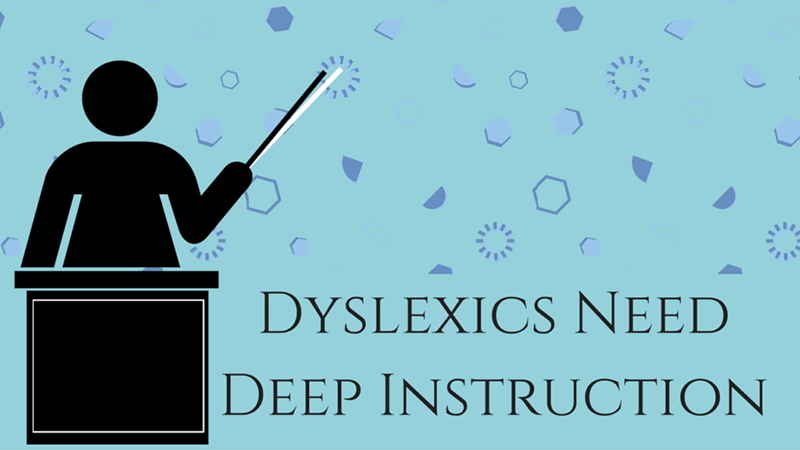Dyslexics Need Deep Instruction
Written by Sandie Barrie Blackley, Speech-Language Pathologist
Published on May 22, 2016
Deep vs. Surface Instruction
Is your child getting deep or surface reading and spelling instruction? How can you tell and does it matter?
In the 1970s Marton and Säljö (1976) described two types of learning approaches based on clinical studies of students:
- a “deep” approach that focused on understanding
- a “surface” approach that focused on memorization.
A student’s learning approach is not a personality trait; rather, it is produced by the interaction of the student with specific learning tasks.
- A “deep learning” approach allows a student to take what’s learned in one situation and apply it to another. It develops procedural knowledge of what, how, why, and when to apply concepts.
- In contrast, a “surface approach” (also called a “holistic” approach) aims at reproduction and often uses analogies and illustrations rather than procedural instruction. (Pask, 1976).
Reading and Spelling Instruction
Students taught to read and spell with a “deep” approach would be expected to use a specific procedure to sound out and spell novel words, to explain spelling patterns and to correct errors.
Students taught to read and spell with a “shallow” approach would be expected to memorize words as whole units (“by sight” or as strings of letters), to use context to guess at words.
Reading and spelling instruction may use both “deep” and “shallow” types of instruction at different times. Students with dyslexia have difficulty with the “surface” approach and benefit greatly from a “deep” approach. This is the basis for structured literacy intervention, which has been shown to help struggling readers and spellers develop an understanding of how words work. Of course, teaching with a “deep” approach requires a teacher who has deep knowledge of word structure.
For example, a teacher with deep word structure knowledge will be able to answer these 10 questions:
- Why are these words homophones (sound the same)? tax – tacks
- Why are there double letters in each of these words? letter, kiss, tapping
- Why does the -i- in this word sound like “uh”? habit
- Why is <in> spelled with one “n” while <inn> is spelled with two?
- Why is does the <y> sound different in these words? gym, cry
- How can the spelling of these words be explained? to – too – two
- Why are these words spelled with an -e- at the end? rate, judge, rinse
- Why does the -a- not sound the same in these words? ash – wash
- Why is the /k/ sound spelled <ch> in school but <c> in cool?
- Why does <gh> sometimes spell a /f/ sound (laugh) and sometimes a /g/ sound (ghost)?
If you aren’t sure, ask a Lexercise therapist!
Improve Your Child’s Reading
Learn more about Lexercise today.
Schedule a FREE
15-minute consultation




Leave a comment